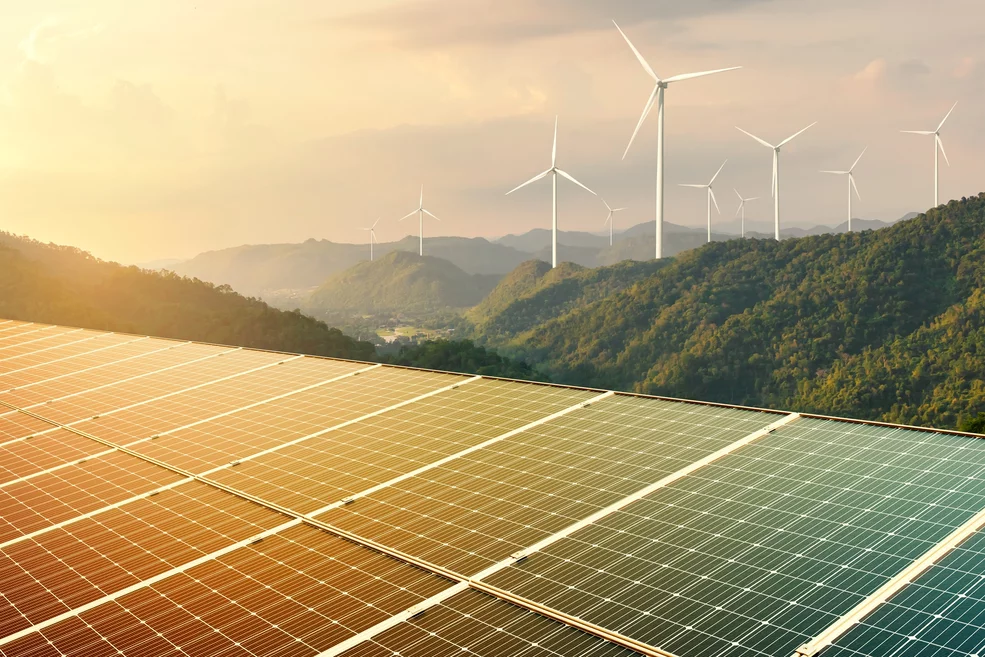Net zero: Taking raw materials into account
Climate change is one of the major challenges of our time. Switzerland wants to become climate-neutral by 2050. This means that from that point on, no more greenhouse gases may be emitted than can be stored naturally or artificially. This requires rethinking energy production and use in Switzerland – moving away from fossil fuels and towards climate-neutral energy sources. So far, so clear. What is less clear, however, is how the various available technologies will be used in the future, how demand for some scarce raw materials will develop, and what environmental damage their extraction and use could cause.
At the Paul Scherrer Institute PSI, a research group in the Laboratory for Energy Systems Analysis has now investigated precisely this issue. In their work, the researchers show, among other things, how the time frame of the transition to climate neutrality will be affected by the choice of different technologies – for example, lithium-based batteries or lithium-free alternatives – as well as uncertainties regarding the quantities of the minerals required in each case. The conclusion: For a climate-neutral Swiss energy system, the consumption of critical raw materials will increase significantly. However, with technological progress, demand and environmental impacts will also change. It is crucial to take all of these factors into account, along with CO₂ emissions, to chart a realistic and sustainable course towards the net-zero goal. The researchers report their findings in the journal Resources, Conservation and Recycling.
No shortcut
“There’s no shortcut to climate neutrality,” says doctoral candidate Alvaro Jose Hahn Menacho, lead author of the study. This means: Although so-called energy system models can show a path to climate neutrality at optimal costs, they do not tell you what potential raw material shortages and environmental impacts this path might entail. Therefore, Hahn Menacho and his colleagues have developed a method that couples the energy system model to a life cycle analysis. “The life cycle analysis considers, in detail, the quantities of raw materials required for certain technologies, the potential environmental damage that can occur during their extraction and processing, and the impact of technological progress,” the scientist explains. The entire supply chain is taken into account, in terms of both material consumption and CO₂ emissions.
To illustrate this with the example of batteries: At present, proven lithium-ion battery technology is used for temporary storage of electrical energy. With the need for more storage capacity, the demand for lithium is expected to rise sharply, increasing pressure on environmentally sensitive mining areas and potentially leading to water shortages, land degradation, and ecosystem stress.
However, the actual amount of lithium required in the coming years could deviate significantly from this forecast if technological advances make batteries more efficient or other battery technologies, such as vanadium redox batteries, become widespread. Depending on the critical raw materials used, the potential environmental impacts arising from the extraction and processing of minerals could also change.
The same applies to materials such as neodymium, which is used in magnets for wind turbines, or iridium, one of the rarest elements in Earth's crust, which is used in electrodes for water electrolysis to produce green hydrogen. Here, too, demand will increase significantly in the coming years, but this could be mitigated through technological innovations, which in turn will influence the environmental impact.
Simulations of uncertainties
“The uncertainties and interdependencies involved in all this are often overlooked in calculations,” says Hahn Menacho. In their analyses, the PSI researchers account for these uncertainties using a Monte Carlo method. This is often used in science to analyse complex systems with many variables. The program calculates thousands of parameter combinations – including the required amount of material, battery efficiency, and the choice of technology – and simulates their impact on the entire projection period of the energy model up to the point of climate neutrality.
Some findings the researchers discovered in their calculations were surprising. For example, depending on developments in battery technologies, lithium demand might even stagnate after a few years in certain scenarios – but then, consequently, there could be a steep rise in vanadium demand. “If such effects are not planned for in advance, unexpected bottlenecks could develop, making the transition of the Swiss energy system to climate neutrality more difficult,” Hahn Menacho says.
Other countries could also benefit from the new calculation model, as it can be easily adapted to different geographical contexts. In the future, Hahn Menacho also plans to expand it to include the supply side, that is, the extraction and processing of materials.
